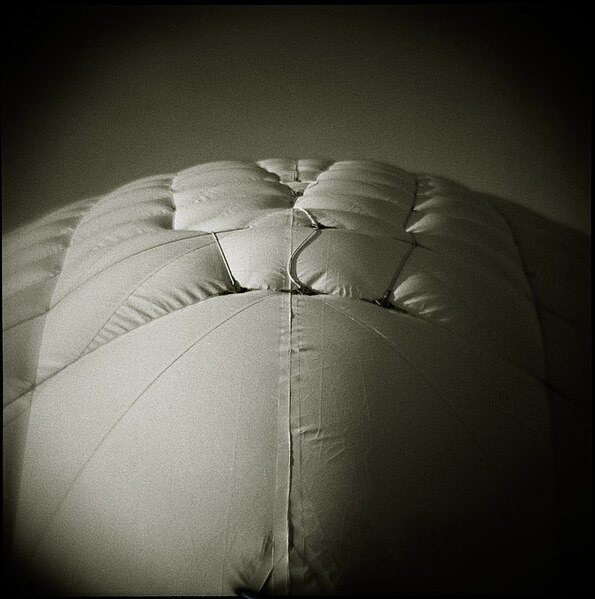A toy camera is a simple, inexpensive film camera.
The original Diana camera was made in Hong Kong in the 1960s and 1970s. The Diana+ and Diana F+ copies are currently produced by Lomography.
Hong Kong's Holga camera takes medium format photographs on 120 film.
A photograph taken with a Holga.
A photograph (Da Ci'en Temple, Xi'an, China) taken with an original Diana camera. Evident is the typical vignetting and blurring inherent in a Diana image.
In photography and optics, vignetting is a reduction of an image's brightness or saturation toward the periphery compared to the image center. The word vignette, from the same root as vine, originally referred to a decorative border in a book. Later, the word came to be used for a photographic portrait that is clear at the center and fades off toward the edges. A similar effect is visible in photographs of projected images or videos off a projection screen, resulting in a so-called "hotspot" effect.
A vignette is often added to an image to draw interest to the center and to frame the center portion of the photo.
Vignetting is a common feature of photographs produced by toy cameras such as this shot taken with a Holga.
This example shows both vignetting and restricted field of view (FOV). Here a "point-and-shoot camera" is used together with a microscope to create this image. Pronounced vignetting (fall off in brightness towards the edge) is visible as the optical system is not well adapted. A further circular restriction of the FOV is visible (the black area in the image).
Vignetting can be used to artistic effect, as demonstrated in this panorama.







